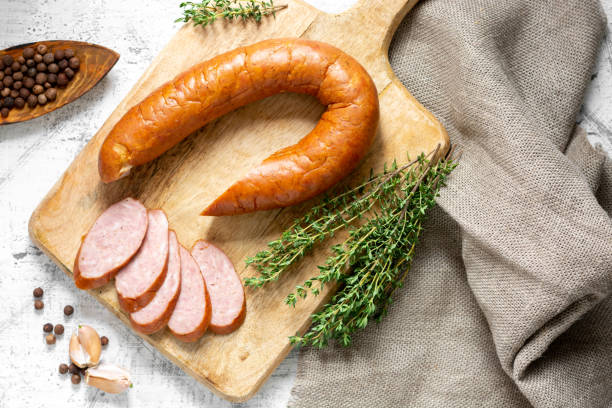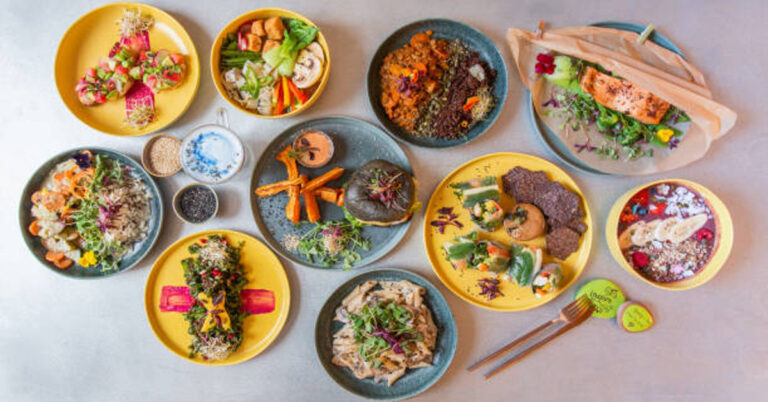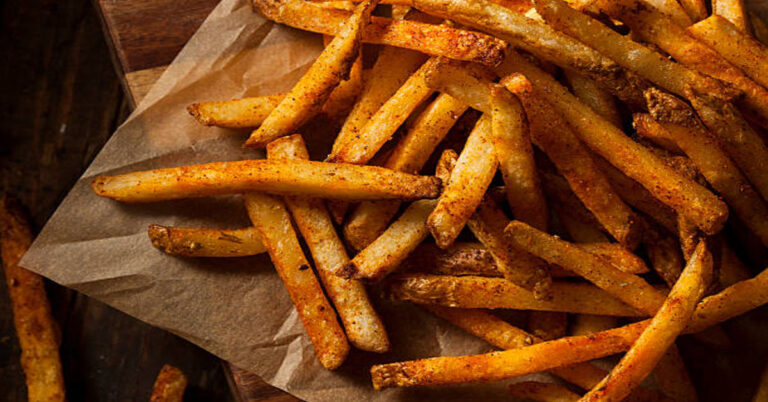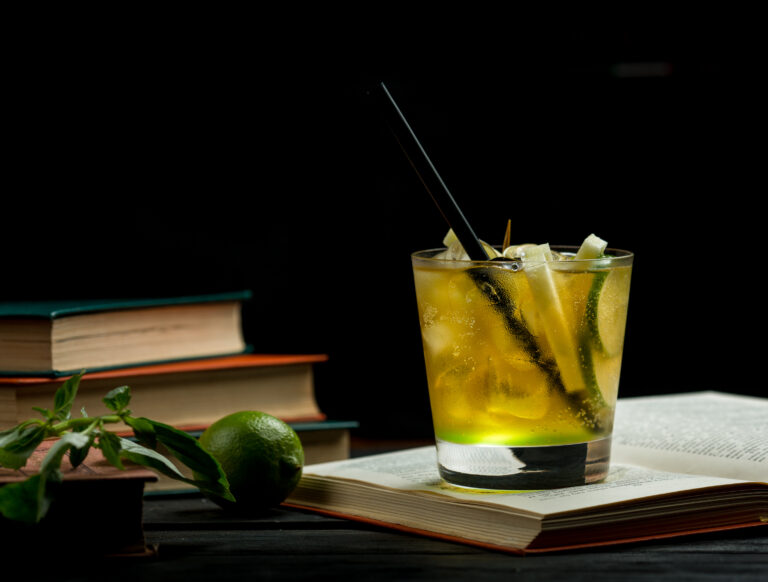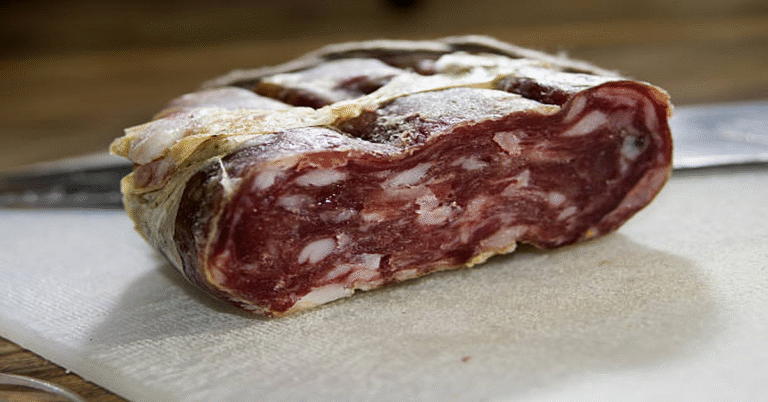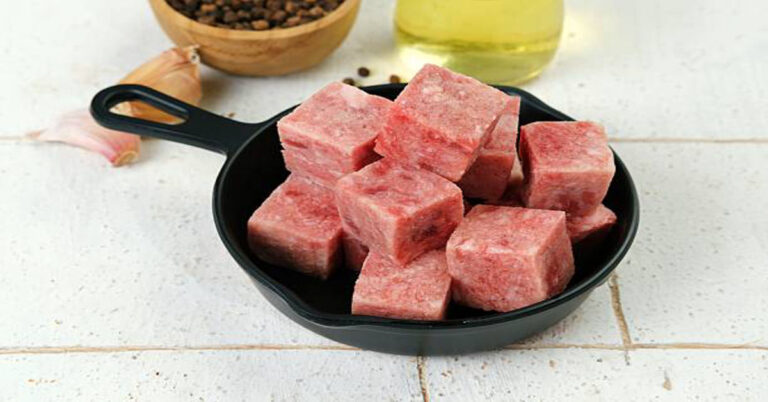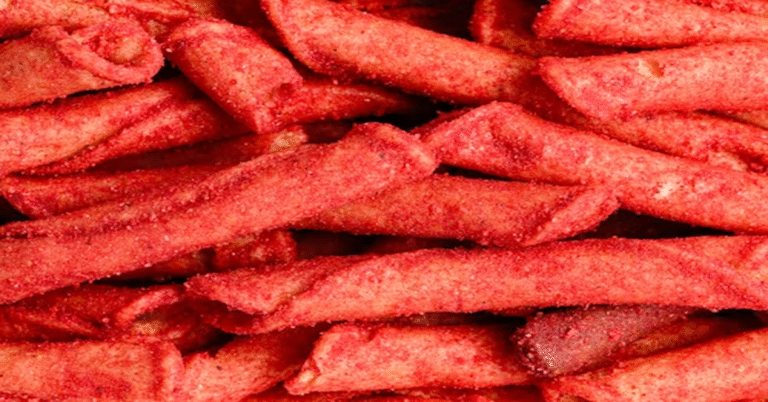Andouille Sausage: Origins, Tradition, and Culinary Significance
Among the many sausages of the world, few carry as much flavor, history, and cultural significance as Andouille sausage. Known for its distinctive smoky aroma, coarse texture, and bold seasoning, Andouille is more than just a type of sausage—it is a story of heritage, migration, and regional adaptation. Its journey from medieval France to the heart of Louisiana cuisine reflects how food evolves across time and geography.
This article takes you on a detailed exploration of Andouille sausage—from its traditional European origins to its modern role in global kitchens. You’ll learn about its preparation techniques, regional varieties, flavor profiles, nutritional composition, and the art of cooking it to perfection.
1. The Historical Roots of Andouille Sausage
The word “andouille” originates from the Old French term “andouiller”, meaning “to insert” or “to stuff,” referring to the process of stuffing meat into casings. The earliest forms of Andouille appeared in France around the 14th century, particularly in the regions of Brittany and Normandy.
Traditional French butchers crafted the sausage using pork stomach, intestines, and other organ meats, which were seasoned, boiled, and then smoked. The emphasis was on using the entire animal, a practice born from necessity and respect for resources. Over time, Andouille became a staple of French charcuterie, celebrated for its rich, smoky aroma and rustic, hearty taste.
When French settlers and Acadian immigrants moved to Louisiana during the 18th century, they brought their culinary traditions with them. However, the ingredients available in the New World differed from those in France. Local cooks adapted Andouille to suit the environment—using pork shoulder, garlic, pepper, onions, wine, and local wood smoke.
The Louisiana version thus evolved into something unique: less organ-based, more meat-heavy, and distinctly spicier, reflecting the influence of Creole and Cajun culinary culture.
2. Comparing French Andouille and Louisiana Andouille
Though both share a name, French Andouille and Louisiana Andouille differ in flavor, texture, and preparation.
| Aspect | French Andouille | Louisiana Andouille |
|---|---|---|
| Main Ingredients | Pork stomach and intestines | Pork shoulder and fat |
| Texture | Firm, coarse, sometimes chewy | Coarse but meaty and smooth |
| Flavor Profile | Earthy, mildly smoky | Bold, smoky, spicy, garlicky |
| Preparation | Boiled then smoked lightly | Heavily smoked with hardwoods |
| Typical Use | Eaten cold or sliced | Used in gumbo, jambalaya, soups |
| Spice Level | Mild | Medium to hot |
This comparison shows how culinary traditions evolve to reflect local taste and availability. Louisiana’s version became synonymous with Cajun and Creole cuisine, while France retained its traditional charcuterie identity.
3. The Cultural Role of Andouille in Louisiana Cuisine
In Louisiana, Andouille sausage is more than food—it’s an emblem of cultural identity. It appears in nearly every classic Cajun or Creole dish, from gumbo and jambalaya to red beans and rice and étouffée.
Communities such as LaPlace, Louisiana, are known as the “Andouille Capital of the World.” Each year, the Andouille Festival celebrates the sausage with parades, cooking contests, and tastings. It symbolizes the fusion of French, African, Spanish, and Native American influences that define Louisiana cooking.
Andouille’s deep smokiness adds depth and complexity to stews and rice dishes, acting as both a flavoring agent and protein source. For many Louisianans, making or eating Andouille is a communal act—something tied to family gatherings, festivals, and local pride.
4. How Andouille Sausage Is Made
Andouille is crafted with care, precision, and time. Traditional sausage-making methods ensure flavor development and preservation. Here is the general process followed by butchers and home artisans alike.
Step 1: Selecting the Meat
High-quality pork shoulder (Boston butt) is preferred for its balance of lean meat and fat. The meat is cut coarsely rather than ground, preserving the sausage’s signature chunky texture.
Step 2: Seasoning
Typical seasoning blends include:
- Garlic (freshly minced)
- Cayenne pepper or paprika
- Black pepper
- Thyme and oregano
- Onion powder
- Salt and sugar
The mixture is marinated for several hours to allow the spices to penetrate the meat.
Step 3: Stuffing
The seasoned meat is stuffed into natural pork casings. Air pockets are pricked to prevent bursting during smoking.
Step 4: Smoking
This is the defining stage. The sausages are smoked slowly over pecan, hickory, or oak wood for several hours. This gives them their characteristic deep brown color and strong aroma.
Step 5: Cooling and Storage
After smoking, Andouille sausages are cooled, vacuum-packed, and stored in refrigeration or frozen for longevity.
5. The Science Behind Andouille’s Flavor
The complex flavor of Andouille results from the combination of Maillard reactions, smoke infusion, and fat rendering.
During smoking, compounds in wood such as guaiacol and syringol infuse the meat with a characteristic smoky aroma. Simultaneously, the meat’s proteins and sugars interact to form a rich brown crust—enhancing both taste and texture.
The presence of fat ensures juiciness, while spices like garlic and paprika add warmth and depth. Every element contributes to the multi-layered sensory experience that defines authentic Andouille.
6. Regional Varieties and Adaptations
As Andouille traveled, it adapted to regional tastes. Below are some distinct variations found around the world:
| Region | Description | Flavor Notes |
|---|---|---|
| France (Brittany, Normandy) | Made from organ meats; lightly smoked. | Earthy, subtle, traditional. |
| Louisiana, USA | Coarsely ground pork, heavily smoked. | Smoky, spicy, garlicky. |
| Germany (Andülswurst) | Similar to bratwurst with smoke elements. | Milder, balanced. |
| Poland (Andujka) | Adapted with local spices and juniper smoke. | Slightly sweet and herbal. |
| Modern Fusion (Global) | Chicken or beef versions with global spices. | Depends on recipe; versatile. |
Each version maintains the core principle of Andouille—stuffed, seasoned, smoked meat—but reflects the terroir and cultural palate of its region.
7. Culinary Uses of Andouille Sausage
Andouille’s versatility makes it a cornerstone of various dishes. Its robust flavor complements grains, legumes, and vegetables, adding depth to even simple meals.
Popular Dishes Using Andouille:
| Dish Name | Description | Region of Origin |
|---|---|---|
| Gumbo | A rich stew of meat, seafood, vegetables, and roux. | Louisiana, USA |
| Jambalaya | A spiced rice dish with sausage, chicken, and shrimp. | Cajun/Creole |
| Red Beans and Rice | Slow-cooked beans with smoked sausage. | Southern USA |
| Andouille-Potato Soup | Creamy soup flavored with sausage and herbs. | American South |
| Andouille Pasta | Cream-based or tomato pasta with smoky sausage. | Modern Fusion |
Because of its assertive flavor, Andouille rarely acts as a background ingredient. Instead, it defines the dish, setting the tone for the entire flavor profile.
8. Nutritional Composition of Andouille Sausage
Though indulgent, Andouille can be part of a balanced diet when consumed moderately. The following table provides a general nutritional breakdown per 100 grams of cooked Andouille sausage:
| Nutrient | Amount (Approx.) | Health Note |
|---|---|---|
| Calories | 300–350 kcal | High energy content |
| Protein | 15–18 g | Rich source of protein |
| Fat | 28–32 g | Contains saturated fats |
| Carbohydrates | 1–2 g | Very low carb |
| Sodium | 800–1000 mg | High due to curing |
| Cholesterol | 70–80 mg | Should be monitored |
While it’s flavorful, Andouille should be eaten in moderation, especially for individuals monitoring sodium or cholesterol intake. Pairing it with fiber-rich vegetables or whole grains balances the meal nutritionally.
9. Healthier Variations and Alternatives
Modern consumers seeking lighter options can enjoy health-conscious adaptations of Andouille. These retain the essence of the sausage while reducing fat and sodium levels.
Healthier Options Include:
- Chicken Andouille: Leaner and lower in fat.
- Turkey Andouille: Mild flavor but still smoky.
- Plant-based Andouille: Made from soy, lentils, or pea protein, seasoned to mimic traditional taste.
Smoked paprika, liquid smoke, and natural casings can recreate the traditional flavor profile without excess fat.
10. Storing, Freezing, and Serving
Proper storage ensures Andouille maintains its quality and safety.
| Storage Type | Temperature | Shelf Life |
|---|---|---|
| Refrigerated (Unopened) | 35–40°F (2–4°C) | Up to 2 weeks |
| Refrigerated (Opened) | 35–40°F (2–4°C) | 3–5 days |
| Frozen | 0°F (-18°C) | 2–3 months |
To serve Andouille at its best, reheat it slowly to preserve texture. Avoid microwaving, as it can toughen the casing. Instead, use a skillet, grill, or oven for even heating.
11. Pairing Andouille with Other Ingredients
Andouille pairs beautifully with ingredients that balance its smokiness and spice. The following table shows complementary pairings:
| Ingredient Category | Examples | Pairing Benefit |
|---|---|---|
| Grains | Rice, quinoa, barley | Absorb and balance flavor |
| Legumes | Red beans, lentils, chickpeas | Add protein and texture |
| Vegetables | Bell peppers, onions, celery | Enhance aroma and color |
| Fruits | Apples, tomatoes | Add sweetness and acidity |
| Beverages | Beer, Chardonnay, sweet tea | Contrast smoky taste |
Balanced pairing transforms a simple sausage meal into a memorable culinary experience.
12. The Art of Cooking with Andouille
Cooking with Andouille requires understanding its intensity. Its flavor dominates lightly seasoned ingredients, so it’s often used sparingly for balance.
Cooking Techniques:
- Grilling: Enhances the smoky flavor and crisps the casing.
- Pan-Frying: Releases aromatic oils, ideal for soups or sauces.
- Simmering: Softens texture for stews and gumbos.
- Oven-Baking: Perfect for casseroles or baked rice dishes.
Tip:
When cooking Andouille in recipes, always render it first to release the flavorful fat that becomes the base of your dish.
13. The Economic and Social Value of Andouille
Andouille sausage plays a small but meaningful role in regional economies, particularly in Louisiana and parts of France. Local butcheries, smokehouses, and family-owned restaurants depend on traditional sausage-making as both a business and a cultural preservation effort.
The Andouille Festival in LaPlace, Louisiana, not only attracts tourists but also sustains small enterprises and artisans. It exemplifies how local foods foster identity, economy, and community pride.
14. Global Recognition and Culinary Influence
Andouille has gained worldwide recognition thanks to chefs and travelers who embrace global fusion. Its flavor inspires modern gastronomy, from gourmet pizzas to smoky pastas. In upscale dining, chefs use Andouille in creative ways—such as emulsions, crumbles, or infused broths.
Its presence in international cuisine underscores how traditional foods transcend borders, evolving while honoring their origins.
15. Andouille in Modern Food Culture
In today’s culinary landscape, Andouille embodies the intersection of tradition and innovation. Health-conscious consumers appreciate lighter versions, while chefs experiment with vegan substitutes. Yet, the original remains a cherished icon of authenticity.
Food media, cooking shows, and social platforms have brought Andouille into global awareness, teaching home cooks how to incorporate it into diverse dishes while preserving its soul.
16. Sustainability and Ethical Meat Production
As discussions about food sustainability grow, producers of Andouille are increasingly adopting ethical and environmentally responsible practices:
- Using locally sourced pork to reduce carbon footprint.
- Smoking with renewable wood sources.
- Minimizing waste through nose-to-tail butchery.
Consumers can support sustainability by buying artisan-made Andouille from trusted local producers rather than mass-manufactured versions.
17. The Future of Andouille Sausage
The future of Andouille lies in the harmony between tradition, health, and innovation. We can expect:
- More plant-based alternatives.
- Heritage pork revival movements.
- Sustainable smoke-curing techniques.
- International fusion recipes.
Andouille’s enduring appeal rests on its adaptability—it evolves without losing its cultural essence.
Conclusion
Andouille sausage is far more than a savory delicacy; it is a living reflection of history, migration, and creativity. From the rustic villages of France to the smoky kitchens of Louisiana, its journey represents the blending of tradition and innovation.
Its distinct aroma, coarse texture, and deep flavor continue to inspire chefs and delight food lovers around the world. Whether served in gumbo, sliced with crusty bread, or reimagined in modern dishes, Andouille connects us to centuries of culinary craftsmanship and human ingenuity.
Frequently Asked Questions (FAQs)
1. What is Andouille sausage made of?
Traditional Andouille is made from pork shoulder, fat, garlic, pepper, and spices, then smoked slowly over hardwood for flavor.
2. How is French Andouille different from Louisiana Andouille?
French Andouille uses organ meats and is lightly smoked, while Louisiana Andouille is meatier, spicier, and heavily smoked.
3. Can Andouille be eaten raw?
No. Andouille is fully cooked during smoking, but it should be reheated before serving to enhance flavor and safety.
4. What dishes use Andouille sausage?
Common dishes include gumbo, jambalaya, red beans and rice, soups, stews, and pasta dishes.
5. Is Andouille sausage spicy?
Louisiana-style Andouille has a moderate to bold spice level, though spice intensity varies by recipe and brand.

